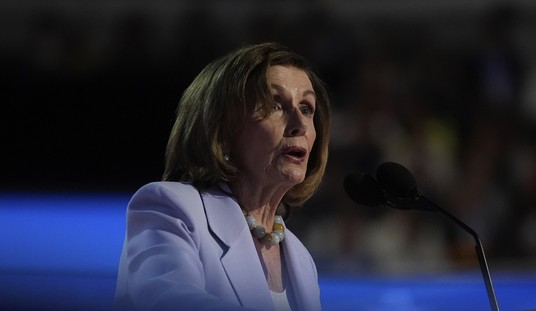On February 28, 2012, an angry 28-year-old gunman entered a medical office building in Colorado Springs and took three women hostage. After a three-hour standoff, the police shot him, and he died later that evening at a local hospital. The hostages were unharmed.
Yet the two largest newspapers in the state took two very different approaches in reporting the heroic actions of one of the clinic physicians, Dr. Jeff Ferguson, a legally armed civilian.
The Colorado Springs Gazette noted:
Ferguson said he has a concealed weapons permit and he grabbed his gun, which was stored nearby. He stood between the gunman and others as an estimated 20 employees and 30 patients in his offices went down the stairs. Some of the patients were in surgical gowns or partially undressed as they left the building, he said.
The local CBS affiliate KKTV reported similarly: “Doctor With Gun Saves Others From Hostage Situation”:
In the chaos, employees started shouting about another exit way, one Dr. Ferguson didn’t want the gunman to know about. He guarded the exit with his gun, allowing everyone else to escape and ready to shoot if he had to. … Dr. Ferguson got out and gave SWAT valuable information about the layout and the man inside.
The Denver Post? They did not mention an armed civilian:
Employees and clients at other offices in the medical building were able to escape with the help of SWAT officers.
Most people would regard the Denver Post version as inaccurate and misleading. But this kind of misleading reporting is not an isolated occurrence.
On January 16, 2002, Peter Odighizuwa came onto the campus of Appalachian Law School and shot dead the school dean, a professor, and a student, and wounded three other students.
Two other students, Mikael Gross and Tracy Bridges, retrieved their handguns from their vehicles, forced Odighizuwa to drop his weapon, and with the help of another student, subdued him. Odighizuwa is now in jail for the murders he committed.
Regarding coverage of the incident, gun rights scholar John Lott noted:
Out of 218 unique news stories (from a LexisNexis search) in the week after the event, just four mentioned that the students who stopped the shooter had guns.
Instead, this description from the Washington Post was typical: Three students pounced on the gunman and held him until help arrived.
Other papers similarly reported that “students tackled the gunman” or “students ended the rampage by confronting and then tackling the gunman, who dropped his weapon.”
One of the heroic students, Tracy Bridges, “carefully described to over 50 reporters what had happened, explaining how he had to point his gun at the attacker and yell at him to drop his gun.” Yet the vast majority of stories omitted the fact that Gross and Bridges used their guns to stop the killer.
What accounts for this omission? According to Lott, some of the reporters cited “space constraints.” Others claimed they didn’t know that Bridges and Gross were armed. Associated Press media relations manager Jack Stokes denied any anti-gun reporting bias. However, he did admit that when he learned how Gross and Bridges stopped Odighizuwa, he was “shocked,” and thought to himself:
My God, they’re putting into jeopardy even more people by bringing out these guns.
In a 2012 paper for the Cato Institute, PJ Media contributor Clayton Cramer and colleague David Burnett observe that:
Many people support gun control regulations because they are convinced that the average citizen is either incapable of using a gun in self-defense or will use the gun in a fit of anger over some petty matter. Those assumptions are false.
Journalists are not immune to such fallacies. If journalists hold similar attitudes, they may thus discount reports of effective defensive gun uses. It simply doesn’t fit their narrative.
They may even think they are being “responsible” by not publicizing such events, lest they encourage others to commit what they regard as reckless copycat acts. But by omitting the fact that the good guys were armed, they risk conveying that it’s somehow safer to “tackle” an armed killer with one’s bare hands.
This journalistic bias against defensive gun use was especially clear in a 2009 example cited by Cramer and Burnett, when a robber held up a small grocery store at gunpoint, emptied the cash register, then herded the customers into the back room. The store manager “opened fire on the robber, killing him.” The police ruled it “justifiable homicide.” But the Miami New Times reported it as: “South Florida Store Clerks Go Vigilante.”
During last week’s tragic murders in Aurora, CO, there were no known defensive gun uses by armed civilians. According to the New York Times, “the theater chain that owns the Aurora movie house bans firearms on the premises.” Hence, we’ll never know if lives could have been saved if the movie theater had allowed law-abiding citizens to carry concealed weapons.
We do know that the Aurora murders will reignite the political debate over gun rights and gun control.
And if journalists allow their biases against defensive gun use to color their reporting, they do the rest of us a grave disservice. It’s wrong for reporters to highlight the criminal misuses of firearms while underreporting the thousands (if not millions) of honest defensive gun uses each year in America.
Americans deserve journalists who will tell the truth — and the whole truth — about defensive gun use.









Join the conversation as a VIP Member